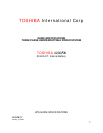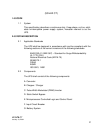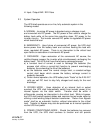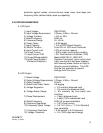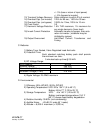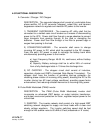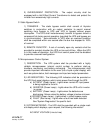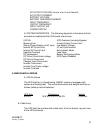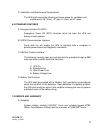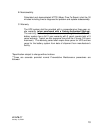4200FA CT
January 13, 2004
6
4.0 FUNCTIONAL DESCRIPTION
A. Converter / Charger / DC Chopper
DESCRIPTION - The converter/charger shall consist of a solid-state three
phase rectifier, DC to DC converter (chopper), output filter, and transient
suppresser network to regulate and maintain DC power to the inverter.
1) TRANSIENT SUPPRESSER - The incoming AC utility shall first be
connected to a molded case circuit breaker as a means of disconnecting
power to the UPS. Power shall flow through a surge absorber to prevent
large transients from passing through to the load or damaging the
batteries. Power shall then flow through a line filter to prevent sags or
surges from passing to the load.
2) CONVERTER/CHARGER - The converter shall serve to change
incoming AC power to DC, which shall be supplied to the DC chopper.
From this point, DC power is used to recharge the battery bank while
simultaneously providing power to the inverter.
a) Input Frequency Range: 45-65 Hz, continuous, without battery
operation
b) Capacity: Battery recharge shall be to within 90% of nominal
from a fully discharged state in 10 times the discharge time.
3) DC CHOPPER - The chopper circuit shall consist of inductors,
capacitors, diodes and IGBT's (Insulated Gate Bipolar Transistors). The
chopper shall have the function of providing start-up protection (by
checking phase rotation of incoming utility power), boosting the DC to the
inverter (during low AC input voltage conditions), providing power factor
enhancement, and reducing reflected harmonics to incoming utility power.
B. Pulse Width Modulated (PWM) Inverter
DESCRIPTION - The PWM (Pulse Width Modulated) inverter shall
incorporate an advanced IGBT design, an output isolation transformer,
and output overcurrent protection for clean, regulated output power to the
critical load.
1) INVERTER - The inverter network shall consist of a high speed IGBT
switching network designed to supply non-linear loads with a clean and
steady voltage waveform. The inverter switching speed shall be fast
enough to limit audible noise to 60 dBA at 3 feet (measured on ‘A’ scale).



